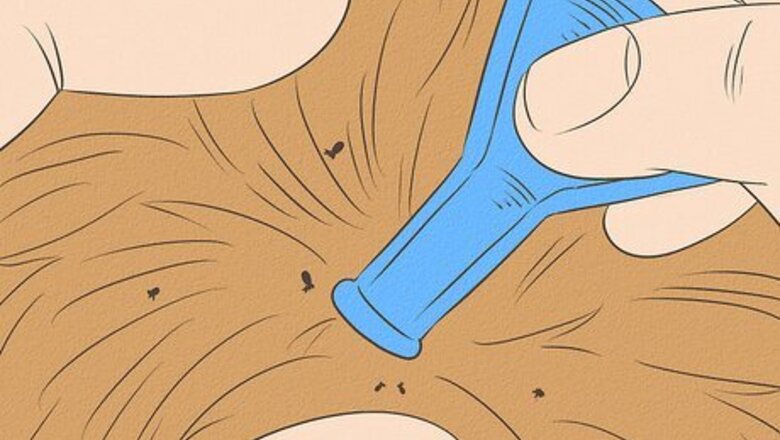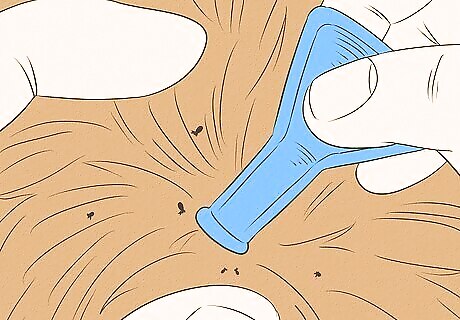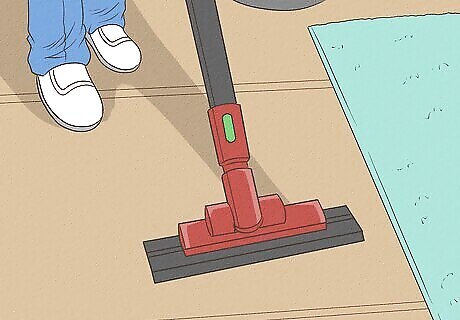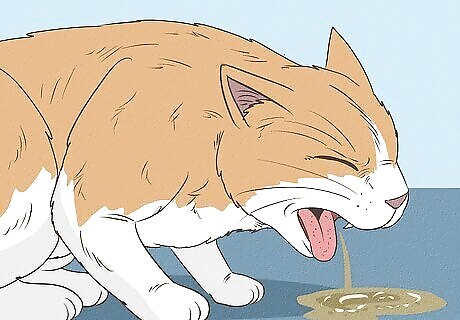
views
Preventing Tapeworms

Treat your cat for fleas. Cats most commonly get tapeworms by ingesting a flea that has tapeworm larvae. Because of this, you can prevent tapeworms by using a flea preventative on your cat. If your cat already has fleas, you need to use a product to get rid of them. To control the fleas, and therefore the exposure to tapeworms, around your cat, you need to treat the cat and the environment. There are many topical products that work to control fleas on your cat. Flea medications include Revolution, Frontline, Advantage, Seresto flea and tick collar, and Capstar tablets.

Treat the environment for fleas. If you find fleas on your cat, after treating the cat you will need to clean and treat your home to get rid of any fleas and eggs that have contaminated the home. If your cat got tapeworms from the infested environment, there is a high risk of other fleas carrying tapeworm larvae and reinfecting your cat. You should treat areas both indoors and outdoors, along with the area where your cat lives, plays, and sleeps. Otherwise, the fleas will continue to be a threat to your cat for up to eight months. You need to vacuum all floors, rugs, and furniture. The contents of the vacuum will need to be thrown away in the garbage and brought out of the house to prevent reinfestation. Floorboards, tile, hardwood floors, rugs, carpets, and furniture should all be vacuumed to remove as many fleas and eggs as possible. Pet bedding or any washable items, like sheets or towels, should be washed in hot water and dried in a dryer. Bed mattresses should also be vacuumed on the top, sides, and bottom. After a through vacuuming, washing, and drying, the home will need to be treated with an insecticide. For the best results consult veterinary staff or an exterminator for help in choosing the best product to eliminate fleas. An important component is to use a product which has residual effect on killing any new infestations and eggs in the future.

Use a preventative medication on your cat. You may want to use a monthly medication to help control worms in your cat. While some heartworm medications will help prevent tapeworms, not all do. Talk to your veterinarian about putting your cat on a monthly medication that prevents both heartworms and tapeworms. Don’t put your cat on any medication without talking to your vet first. Outdoor cats that hunt a lot may need to be frequently dewormed against tapeworms in order to keep tapeworms from becoming a problem.

Keep your cats indoors. You may want to consider keeping all your cats indoors. Cats get tapeworms from coming in contact with fleas or contaminated feces or rodents. By keeping your cat indoors, you eliminate his exposure to contaminants. Keeping your cat indoors doesn’t eliminate fleas completely, but it helps significantly reduce the risk of your cat contracting fleas.
Treating Tapeworms

Identify tapeworms. Tapeworms attach onto the intestinal wall, and when the tapeworm matures, it develops body segments that contain eggs. The segments break off from the main body of the tapeworm and pass out of the body in the stool. After the segments pass out of the cat’s body in the stool, they will frequently stick to the hair around the anus. These small white, flat egg segments will dry out and look like little pieces of rice stuck to the hair. Occasionally, you will also see the segments and possibly an adult body on the actual bowel movement. These will be white, glistening, and ribbon like pieces on the surface of the stool.

Recognize other symptoms. The most common way to find out your cat has tapeworms is through evidence in the feces because cats have very few symptoms from tapeworms. Because the tapeworm attaches itself to the intestine and may end up in the stomach, your cat may vomit the tapeworm. Your cat may also lose weight because the tapeworm is taking nutrients from the intestines. Your cat may also have a lackluster coat. Your cats may have anal irritation because of the tapeworms, so he may lick at it or scoot its behind across the floor.

Treat tapeworms. If you think that your cat has tapeworms, take him to the vet. Your vet will generally rely on you to inform him about the tapeworms because fecal exams won’t show the eggs. Your vet will recommend medications that kill the adult worm and cause it to eventually pass out of the body. The medication that is effective at killing tapeworm is called praziquantel. This drug is frequently combined with other deworming medication to kill other intestinal parasites. Trade names for this medication include Droncit, Drontal Plus, and Tradewinds Tapeworm Tabs. These medications can be found at vet clinics or other stores which sell pet products.

Learn how cats contract tapeworms. Cats can contract tapeworms a few different ways. Tapeworms are carried by fleas, so your cat can get tapeworms if he has fleas. Tapeworms pass to the cat when he ingests the flea. Tapeworms need to have an intermediate host, the flea, to complete its life-cycle and infest the next cat that comes along. The cat becomes infected with tapeworms by swallowing a flea infected with tapeworm larvae, or by eating a small mammal, usually a rodent, that contains the worm in its body. Cats that hunt vermin like rodents and eat their kill can frequently catch tapeworms from their prey.



















Comments
0 comment